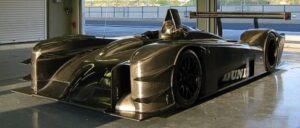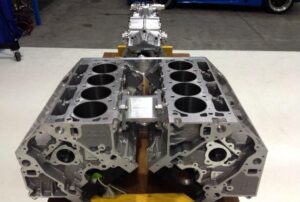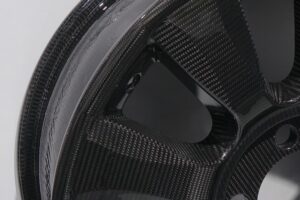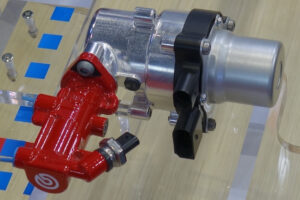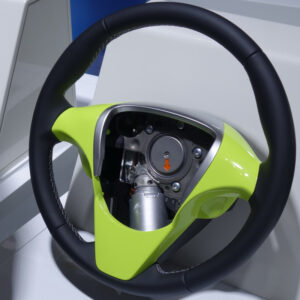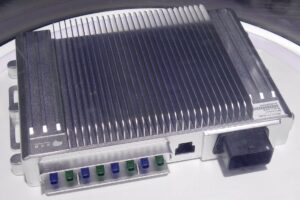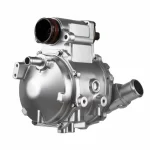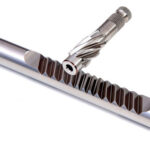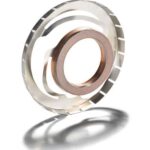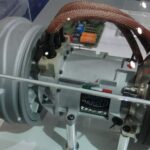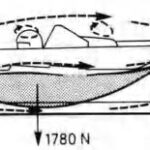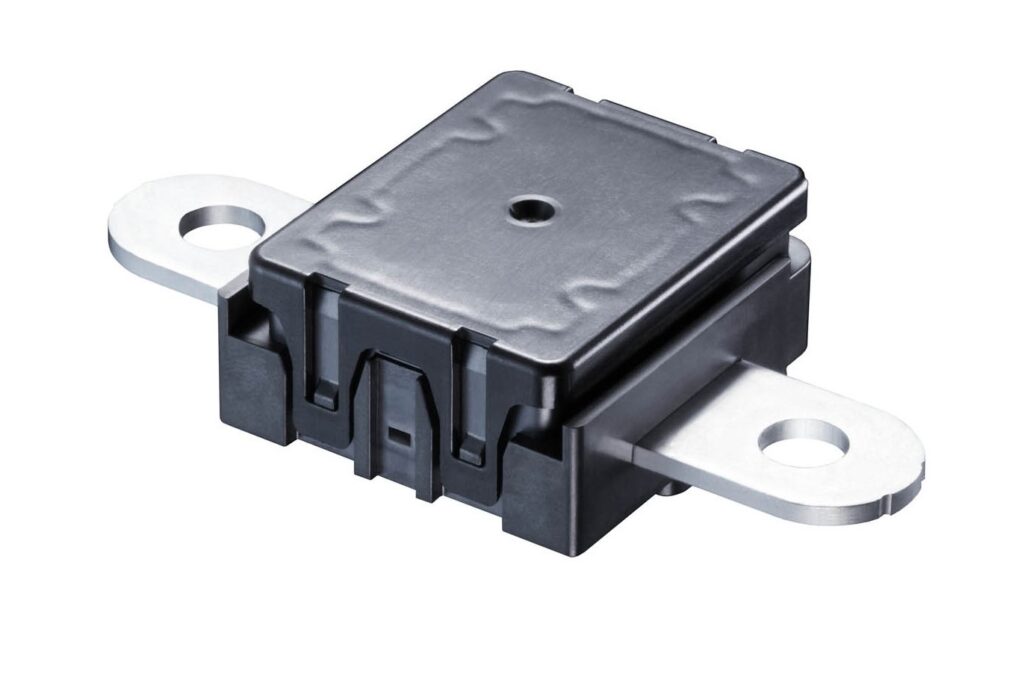
Handing high currents in the ±1,200A range used in BEVs while being 40% smaller in size. Completely redesign IC and new structure without a core enabled these futures. Magnetic core was tend to size up the products. The news structure enabled to detect currents without it.
Detecting the current more precisely using a new detection method called magnetic balance. When the sensor magnetized, it more likely to not detect precise current. New method enabled to the sensor to be less magnetized.
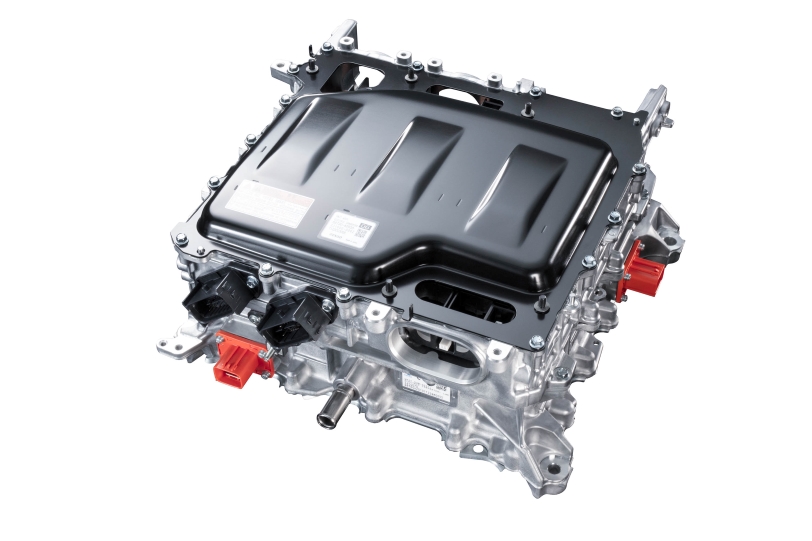
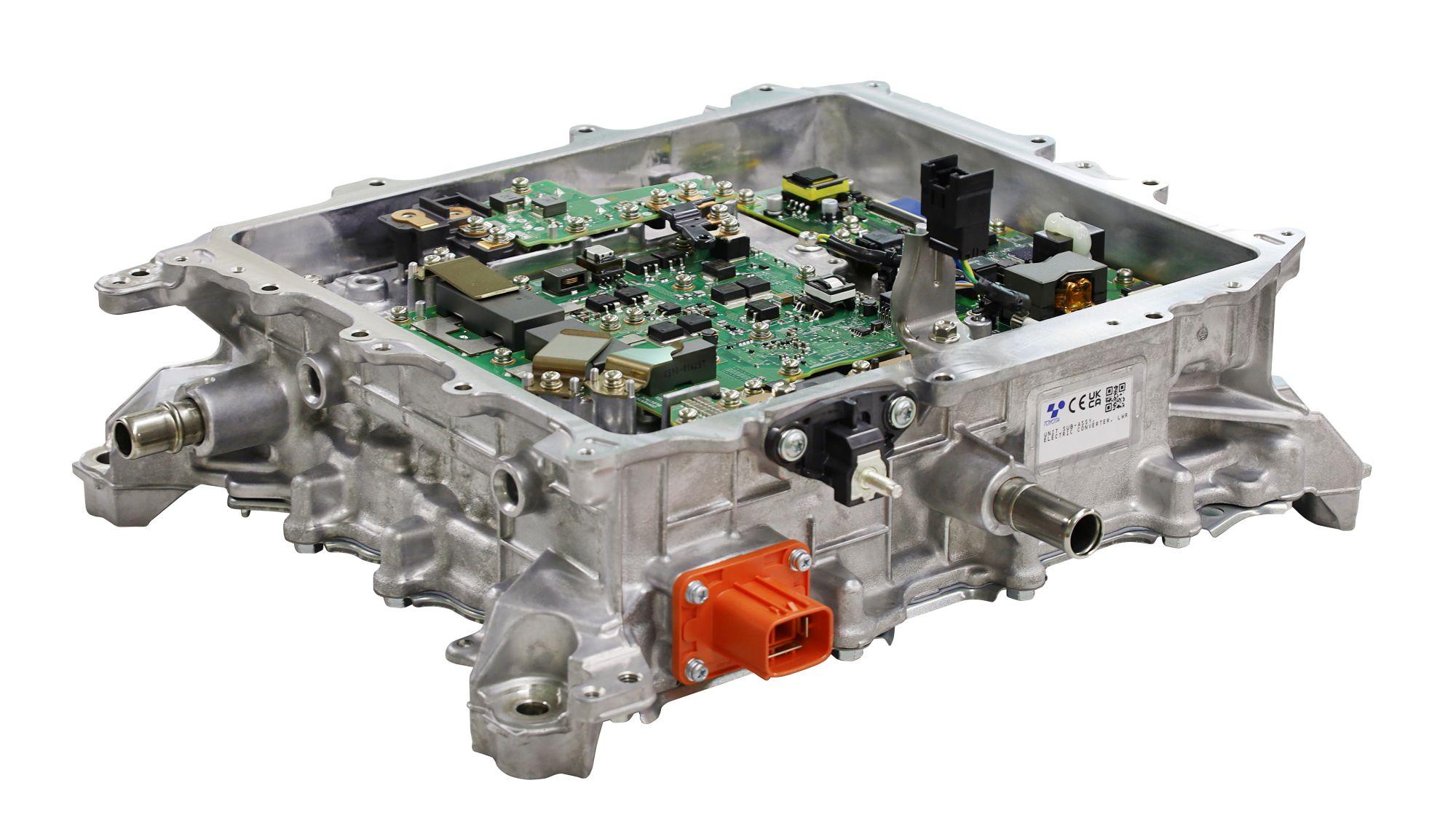
Combining a group of products essential for BEV into one unit with the functions of battery charging, electrical power conversion, and electrical power distribution. ECU that controls battery charging, AC battery charger and DCDC converter developed by Toyota Industries Corporation were combined together.
Expanding electric driving range and the passenger space by reducing size and weight and creating large battery capacity.
Reducing battery charging times with quick-charging function.
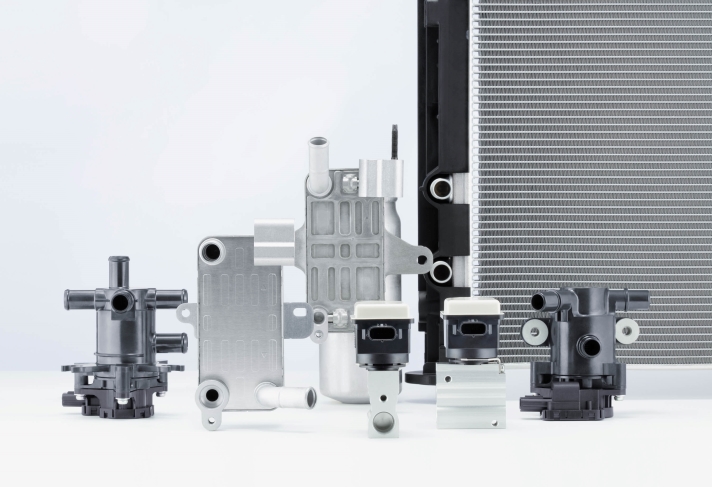
Developing the first in the world heat pump system, which activates a defrosting function while the BEV is moving. This improves the energy efficiency of BEV when the heat pump system becomes frosted in winter.
Converting the refrigeration cycle into a receiver cycle, a simple structure. A precise control of the working cycle and a multifunction valve called MCV-e(Multi-flow Control Valve for ev) enabled this. It improves heat pump’s cooling performance while remarkably reducing the number of components comparing to accumulator cycle, which used in common heat pump systems.
Exchanging heat between high-temperature water circuit, low-temperature water circuit and the refrigeration cycle using MCV-e. This simplified system integrating water circuits ensures quality and improves scalability.
Helping to extend battery life with greater battery cooling performance brought by a high-performance small chiller. A sharp rise in battery temperature is suppressed to ensure stable energy output from the battery. Energy is used up efficiently even when the battery temperature significantly changes, such as when driving at high speed.
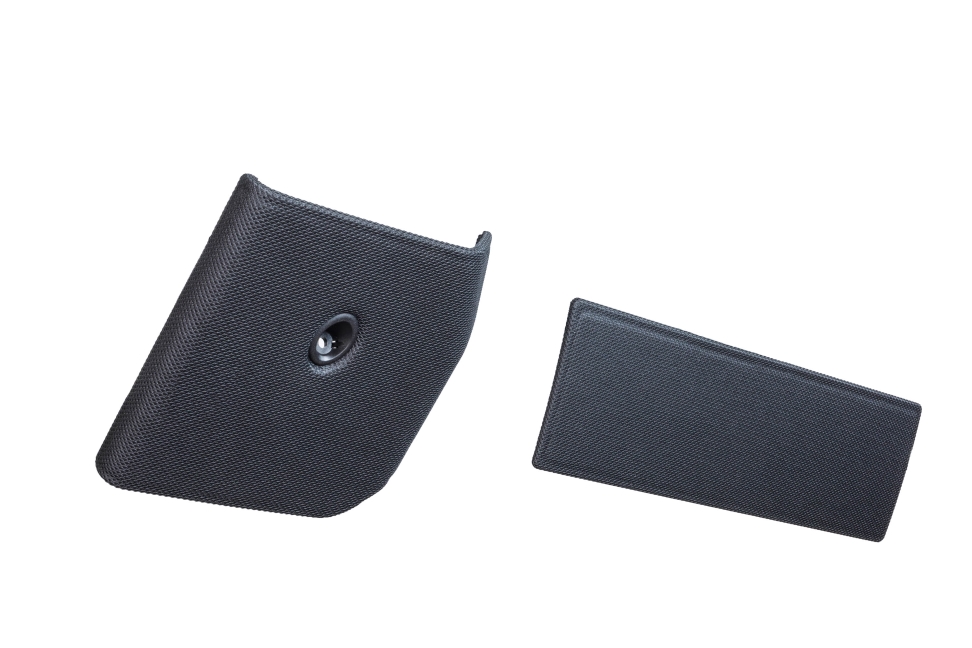
Helping to extend electric driving range when the heating is on. Combination with the heat pump system, the highly heated surface efficiently warms occupants only and reduces the energy required.
Ensuring both comfort and safety: the surface of the heater has a thin-film structure that can be heated to over 100°C in about a minute to quickly warm the knee area. With the world first heater structure technology, the moment a passenger touches the heater surface, its temperature drops below 50°C.
Ensuring safety even if passenger keeps touching the heater for a long time. The thin-film structure has a built-in contact sensor that detects an occupant’s contact and stops heating.

